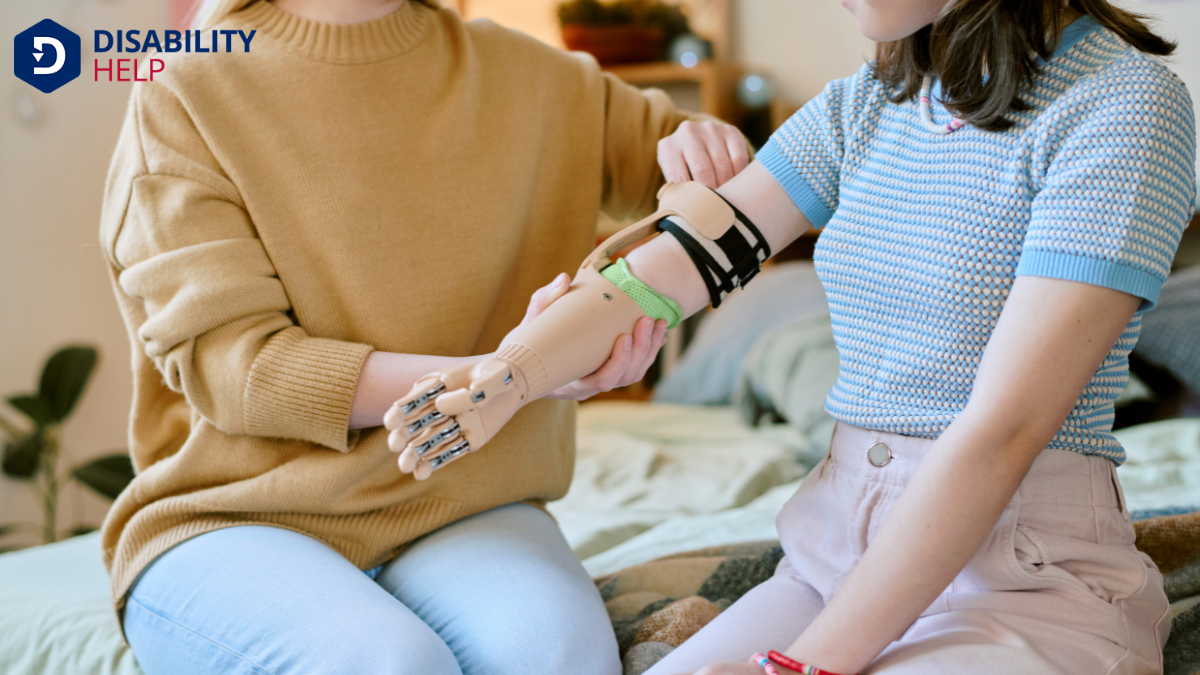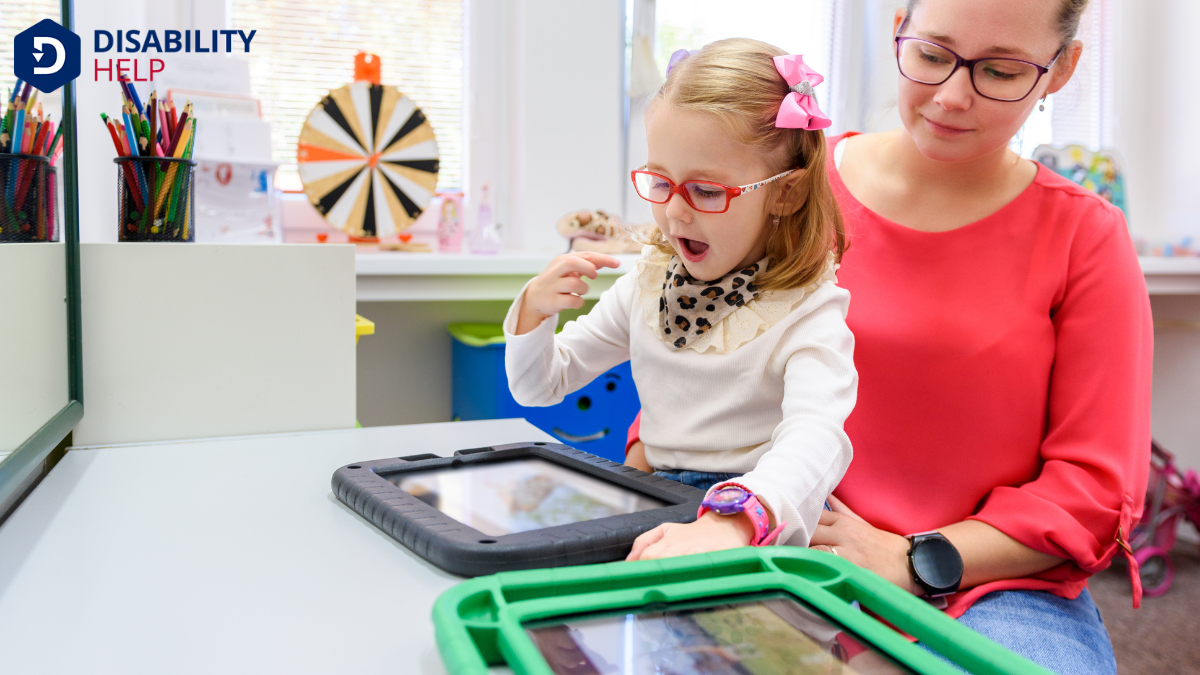When we talk about assistive technology, we're exploring a fascinating world of tools designed to empower individuals with disabilities. These devices, ranging from simple canes to advanced voice-activated systems, aim to enhance independence and inclusivity. But what exactly qualifies as assistive technology? How do we determine which tools truly make a difference? Let's uncover the criteria that define this essential field and its evolving impact on our daily lives.
Key Takeaways
- Assistive technology includes devices or tools that aid individuals with disabilities to enhance independence and quality of life.
- It encompasses both low-tech devices like canes and high-tech software solutions.
- Categories include mobility aidsDevices designed to help individuals move around more easily, such as canes, walkers, or wheelchairs..., hearing aids, visual aids, and communication devices.
- Qualification depends on individual needs, impact on functionality, and integration into daily life.
- Emerging innovations like wearable devices and augmented reality apps are reshaping accessibilityThe design of products, devices, services, or environments to be usable by people with disabilities.....
Defining Assistive Technology
Assistive technology, an essential tool in enhancing daily living for individuals with disabilities, encompasses a wide range of devices and services. We recognize it as any item or system that helps overcome challenges in communication, mobility, hearing, or vision. These technologies empower us by providing greater independence and improving quality of life.
When we think about assistive technology, we’re considering tools that bridge the gap between limitations and potential. This includes both high-tech solutions, like speech-generating devices, and simple tools, such as modified grips for utensils.
Our goal is to guarantee everyone can participate fully in daily activities, regardless of physical or cognitive barriers. By understanding and utilizing these technologies, we’re opening doors to opportunities and fostering inclusionThe practice of creating environments in which any individual or group can be and feel welcomed, res... in our communities.
Categories of Assistive Devices

Now that we've explored what assistive technology is, let's look at the various categories of assistive devices available to support diverse needs.
These devices can enhance accessibility in many areas of daily life, catering to specific challenges individuals might face. Here are some key categories:
- Mobility Aids: These include wheelchairs, walkers, and canes, helping those with physical mobility challenges navigate their environments more easily.
- Hearing Aids: Devices like cochlear implants and hearing aids assist individuals who are deaf or hard of hearing by improving sound clarity.
- Visual Aids: Tools such as screen readers and magnifiers support those with vision impairments in accessing information.
- Communication Devices: Augmentative and alternative communication (AAC) devices help individuals with speech impairments communicate effectively.
Criteria for Qualification
When determining eligibility for assistive technology, it’s vital to reflect on the specific needs and circumstances of each individual. We must consider how a device can enhance someone's daily living, learning, or working abilities.
The primary criteria include the degree to which a person's functional capabilities are impacted and whether the technology can effectively support overcoming these challenges.
Let's also weigh how the assistive device can integrate into an individual’s environment, making life more accessible and empowering. Cost-effectiveness and user-friendliness are key factors, guaranteeing the technology is both affordable and easy to use.
Finally, evaluating the long-term benefits versus the initial investment is essential. By carefully reviewing these criteria, we can confirm that the technology chosen truly meets the individual’s needs.
Everyday Tools and Their Impact
Let's explore how common assistive devices, like hearing aids and screen readers, play vital roles in our daily routines.
These tools don't just make tasks easier; they empower individuals to lead more independent lives.
We should consider how these technologies enhance accessibility and improve the overall quality of life.
Common Assistive Devices
Assistive devices, ranging from basic tools to advanced technology, play an essential role in enhancing the daily lives of individuals with disabilities.
These tools are designed to support independence and improve quality of life. We often overlook their significance, but they’re crucial for promoting accessibility and inclusivity.
Let’s consider some common assistive devices:
- Wheelchairs: Enable mobility for those unable to walk.
- Hearing aids: Amplify sound for individuals with hearing lossPartial or total inability to hear sounds in one or both ears..
- Screen readers: Convert text to speech for visually impaired users.
- Grab barsBars installed in bathrooms or other areas to provide support and prevent falls for those with mobil...: Provide stability and safety in bathrooms.
Each device addresses specific needs, making everyday tasks more manageable.
By understanding and appreciating these tools, we can better support our community members who rely on them.
It’s important we recognize the impact these devices have on fostering independence.
Enhancing Daily Life
Recognizing the role of common assistive devices, we find that their influence extends far beyond mere functionality; they truly enhance daily life for many.
These tools, from voice-activated assistants to simple grabbers, offer solutions that empower individuals in their daily tasks. Imagine the relief of using a smart thermostat that adjusts the temperature with a simple voice command or the freedom provided by a GPS app that verbally guides us through unfamiliar areas.
We might take these conveniences for granted, but for those with specific needs, they transform challenges into manageable tasks.
Assistive technology fosters independence and dignity, allowing more people to engage fully in their communities. By embracing these advancements, we’re not just improving accessibility; we’re enhancing overall well-being and inclusivity for everyone.
Emerging Innovations

In the rapidly evolving field of assistive technology, emerging innovations are reshaping how we approach accessibility and independence for people with disabilities.
We’re witnessing groundbreaking advancements that enhance lives and empower individuals. These innovations include:
- Wearable devices: Smartwatches and fitness trackers now offer features like fall detection and medication reminders, supporting users in real-time.
- Voice-activated assistants: They provide hands-free operation, simplifying daily tasks and fostering greater autonomy through voice commands.
- Augmented reality (AR) apps: AR enhances communication and learning by overlaying digital information on physical environments, aiding those with visual impairments.
- Brain-computer interfaces: These interfaces offer new ways for individuals to control devices with their thoughts, opening up possibilities for those with severe mobility challenges.
The Role of Accessibility Standards
While technological advancements drive innovation, the role of accessibility standards is essential in guaranteeing these breakthroughs benefit everyone. Accessibility standards guide us in creating technologies that are inclusive and usable by individuals with diverse needs. They help us design with the goal of removing barriers, whether physical, digital, or cognitive, to create equitable access for all.
Standards like WCAG (Web Content Accessibility Guidelines) provide clear criteria for web accessibility, helping developers create websites that everyone can navigate.
These guidelines guarantee that assistive technologies, like screen readers and voice recognition software, function effectively. By adhering to these standards, we not only comply with legal requirements but also foster an inclusive environment where technology empowers rather than excludes.
Let’s embrace these standards for a more accessible future.
Challenges in Implementation
Although we endeavor to adhere to accessibility standards, implementing them in practice often presents significant challenges.
As we navigate these obstacles, it's crucial to recognize the complexity of integrating assistive technologies into existing systems.
Let's explore some common hurdles we face:
- Cost: Budget constraints can limit the acquisition of necessary technologies, impacting those who need them most.
- Training: Both users and providers need adequate training to effectively utilize assistive devices, which requires time and resources.
- Compatibility: Existing infrastructure may not support new technologies, necessitating expensive upgrades or replacements.
- Awareness: There’s often a lack of understanding about available technologies, hindering their adoption.
The Future of Assistive Technology

Facing the challenges head-on, we recognize the immense potential for growth and innovation in assistive technology. As technology advances, we're seeing more personalized and efficient solutions that empower individuals with disabilities.
Future developments could transform wearable devices, smart home technologies, and AI-driven tools, making them more accessible and user-friendly.
Our journey includes exploring how these innovations can seamlessly integrate into daily life, enhancing independence and quality of life.
Collaboration across industries, from tech companies to healthcare providers, will be essential to drive these advancements. We must also emphasize creating affordable solutions so everyone benefits from these technological leaps.
Conclusion
In exploring assistive technology, we've seen how these tools transform lives, enhancing independence and accessibility. From simple aids to groundbreaking innovations, they empower individuals with disabilities by meeting their unique needs. We must prioritize accessibility standards and address implementation challenges to maximize their impact. As we look to the future, let's embrace these advancements, ensuring everyone can participate fully in daily life. Together, we can drive progress and improve quality of life for all.






